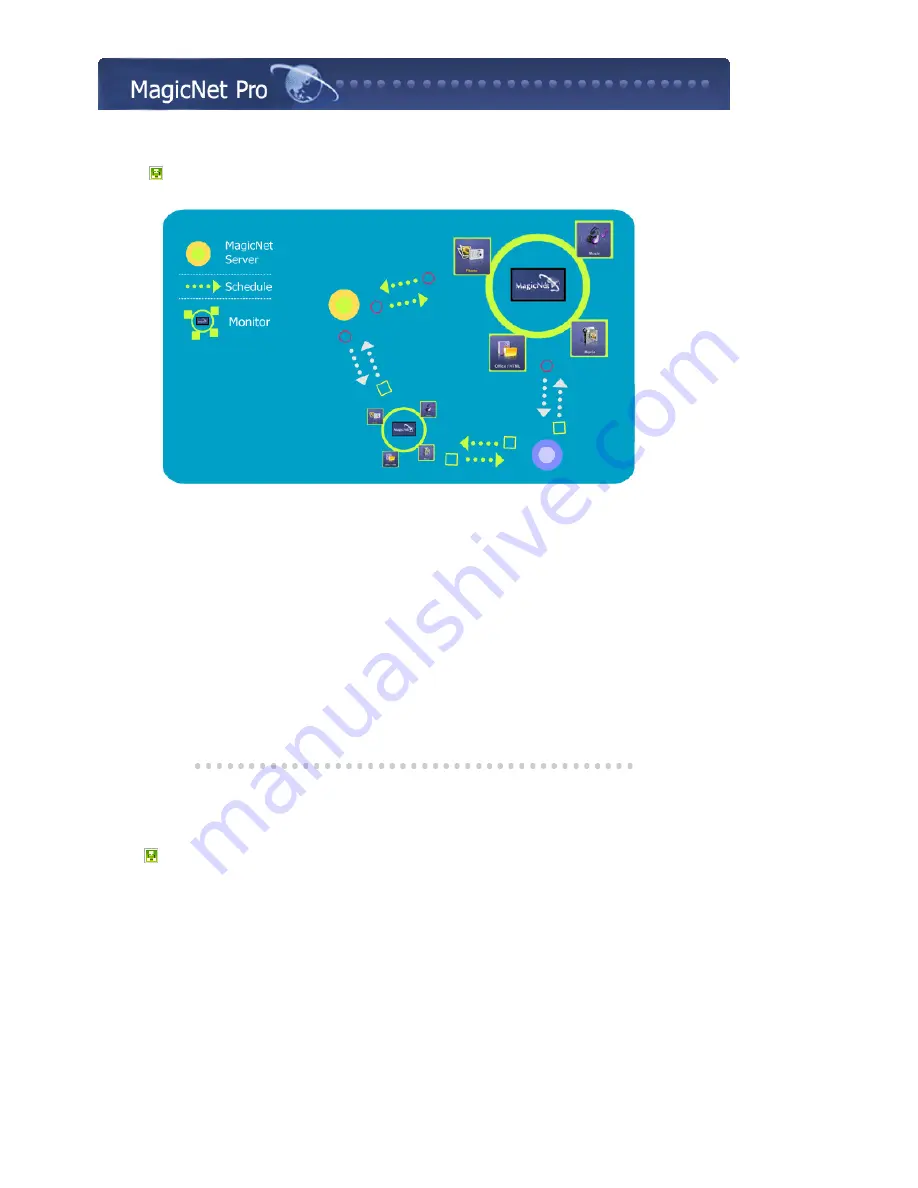
What is MagicNet?
|
Using MagicNet
|
Library
|
Screen
|
Schedule
Remote Management
|
Message
|
Option
|
Client / Contents
Server
|
Troubleshooting
What is MagicNet?
MagicNet uses an Ethernet network for servers and monitors, and transfers media files (image files,
music files, and movies) and office files (HTML, PDF) from the server to the monitors over the
network. Multiple monitors are connected to a server via a network and the server can transfer files to
all the monitors at the same time or a single file to a single monitor. There are two ways to transfer
files. The first is that the server registers a schedule to the monitors and then transfers files following
that schedule. The second is that a monitor searches for the files registered in the library list of the
server and receives and plays them. If more than one server is connected, the monitor can select a
server and can receive a schedule from it. The monitor has a built-in Internet connection function. The
servers and monitors are connected to the network. Each server or monitor has a unique name to
identify itself on the network. A server and a monitor can only be connected if they have the same
server name. For example, if the name of a server is 'MagicNet', only the monitors whose server
name is 'MagicNet' can receive schedules from it. If a monitor cannot find a server whose name is the
same as the server name configured in it, it waits until a server with that name appears. However, if
Auto Connection is enabled, the monitor attempts to connect to other servers and connects to the first
server that responds.
Major Functions of MagicNet
1. Free Screen Design
→
You can configure the screens to be displayed on the monitor by placing and playing multiple areas
on them feely and changing the area properties.
2. Content Downloading or Streaming
→
You can select Stream or Download for the transfer mode to play content on the screens and thus
play the screens according to your circumstances. The downloaded screens are played on the monitors
at the scheduled time even though the monitors are not connected to the server.
3. Library Media File Management and Content Server
→
You can manage the registered content in the library efficiently by creating folders. You can play the
content on the screens according to your circumstances by operating the content server in accordance
with the network status.
4. Network/Local Schedules and Publishing
→
You can transfer the edited screens to selected monitors by using the publishing feature. You can
also transfer screens to the monitors which are not connected to the network by using the local
















































